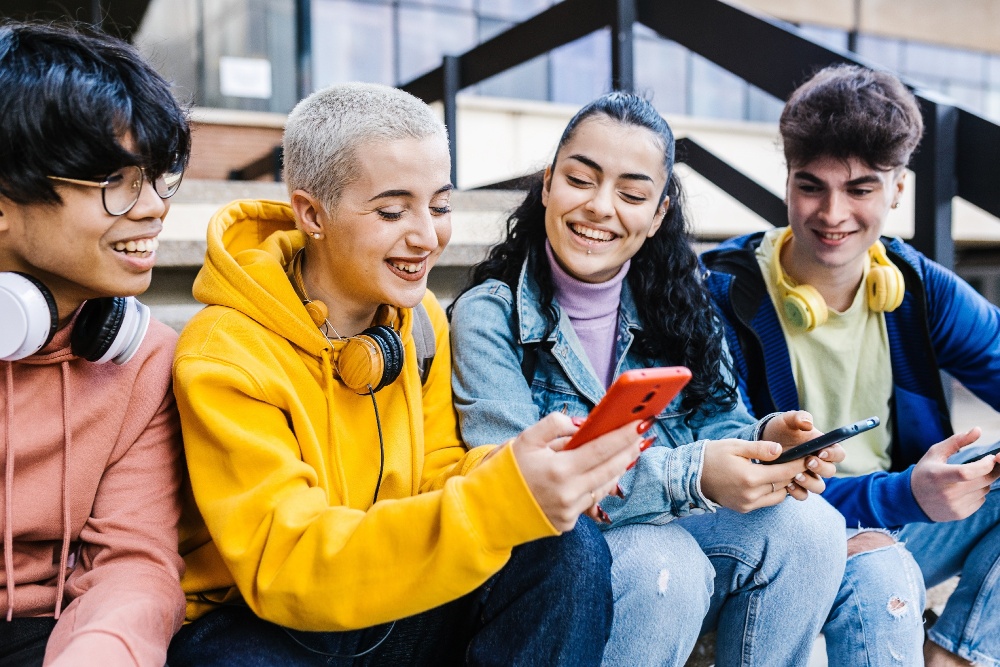Navigating Adolescent Social Media Use
This guide examines dangers like addictive algorithms, digital strangers, and comparisons. You’ll discover warning signs of problematic use and tips to instill healthy, balanced habits. United through understanding, we can help teens reclaim social media’s positives.

Table Of Content
- Guiding Teens in Safe Social Media Use
- Recognizing the Dangers of Teen Social Media Obsession
- Warning Signs of Unhealthy Teen Social Media Use
- Establishing Safe Social Media Ground Rules
- Fostering Healthy Social Media Habits
- Preserving Social Media's Benefits While Mitigating Harm
Guiding Teens in Safe Social Media Use
Social platforms like Instagram, Snapchat, and TikTok dominate teenage life today. While social media provides entertainment and connection opportunities, its unrelenting presence also poses risks to adolescent mental health and safety.
As parents, gaining awareness around hidden hazards allows us to set appropriate boundaries. But banning social media rarely works long-term. Teaching teenagers safe social media literacy protects them while still embracing its benefits.
Recognizing the Dangers of Teen Social Media Obsession
What lurking threats should parents know about? Here are some key risks:
Addictive By Design
- Content is engineered to maximize engagement through likes, shares, and comments. Teens compulsively chase external validation through notifications.
- Algorithms determine content suggestions based on past activity. More time spent mindlessly scrolling assists the algorithm in promoting similar content.
- Addictive feedback loops trap teens in obsessive social media use as algorithms feed them more of whatever holds their attention.
Unrealistic Expectations
- Teens compare themselves to peers’ curated highlight reels and influencers showing off aspirational, filtered versions of life.
- Trying to mimic unrealistic, staged levels of beauty, adventure, and success breeds anxiety and low self-esteem.
- “Finstas” (fake Instagram accounts) portraying a perfect alternate life are increasingly popular with teens.
Cyberbullying and Exclusion
- Teens face constant risks of bullying, gossip, mocking, and social shunning online, leading to depression and suicidal ideation.
- Anonymity online emboldens cruelty, humiliation, false rumors, “roasting,” and other harassment.
Digital Stranger Danger
- Predators lurk anonymously across platforms, ready to groom susceptible teens.
- Teens often feel pressured by strangers to share revealing photos or engage in virtual relationships with unknown parties.
Sleep Disruption
- Blue light exposure from devices suppresses sleep-inducing melatonin, reducing sleep quality and emotional regulation.
- Pressure to stay up monitoring notifications leads to chronic sleep deprivation, impairing all aspects of health.
Recognizing early on how social media threatens healthy development helps parents protect adolescents from slippery slopes.
Warning Signs of Unhealthy Teen Social Media Use
Along with understanding risk factors, identifying problematic usage is critical for intervention. Some red flags include:
- Obsession with monitoring notifications and updated feeds
- Never taking a break from posting or messaging peers
- Becoming extremely upset if parents restrict or monitor social media use
- Withdrawing from in-person friendships and family interactions
- Declining interest and time for other hobbies once enjoyed
- Falling grades and problems concentrating at school
- Changes in sleep habits, appetite, or complaints of headaches/eyestrain
- Secretive behavior like using apps in rooms with doors closed or hiding device screens
- Quickly switching screens or concealing use when parents walk by
It is essential to remind teens that social platforms should enhance life, not consume it. Keep lines of communication open if concerns arise.
Establishing Safe Social Media Ground Rules
Parents implementing structure can help teens approach social media more deliberately:
- Set time limits for using apps, such as 1—2 hours daily, maximum. Use built-in monitoring tools.
- Create tech-free zones/times at home, like during meals, after 9 p.m., and in bedrooms.
- Learn about privacy settings and customize them for greater control over sharing.
- Follow and friend your teen on platforms to better understand their digital world.
- Have ongoing conversations about predatory behaviors from strangers online, such as asking to keep secrets.
- Encourage connecting online with people they know in real life versus strangers.
- Teach them to come to you if cyberbullying occurs so you can document and report instead of responding.
- Remind them that nothing is truly private online, even when using anonymous accounts. Nothing shared digitally ever disappears completely.
- Share your values and expectations for appropriate tech use. Involve them in creating family social media agreements.
With mutual understanding, parents can thoughtfully guide teenage social media use without losing trust.
Fostering Healthy Social Media Habits
Teach practices promoting intentional, balanced use:
- Perform regular social media audits evaluating how different platforms make them think and feel about themselves and whether those thoughts are positive.
- Seek enriching content and diversify feeds by following positive influencers and accounts unrelated to appearance or social status.
- Take occasional digital detoxes or "fasts" for one week. Discuss any mood improvements from unplugging.
- Disable distracting push notifications to remove the compulsion of continuous monitoring.
- Schedule mandatory daily non-screen time focused on other hobbies, activities, and real-world socializing.
- Start a thankfulness journal or gratitude social media account to shift focus toward positives.
- Share vulnerabilities like fights with friends in healthier ways through private conversations versus passive-aggressive online posting.
Teens need to learn that it's okay to disconnect at times. Taking digital breathers can help reset their mindset.
Preserving Social Media's Benefits While Mitigating Harm
When approached intentionally and with guidance, social media can allow teens to explore identity, communicate, learn, create, and bond with peers. Platforms offer lifelines for isolated teens struggling with mental health or discrimination. Our focus should remain on maximizing rewards while minimizing risks through education, mutually agreed boundaries, and open discussion.
Listen more than lecture. Trust teens to make good choices when equipped with the right digital literacy tools. Support them in using social platforms to enrich rather than isolate. Together, we can keep their social media experience safe and positive.
